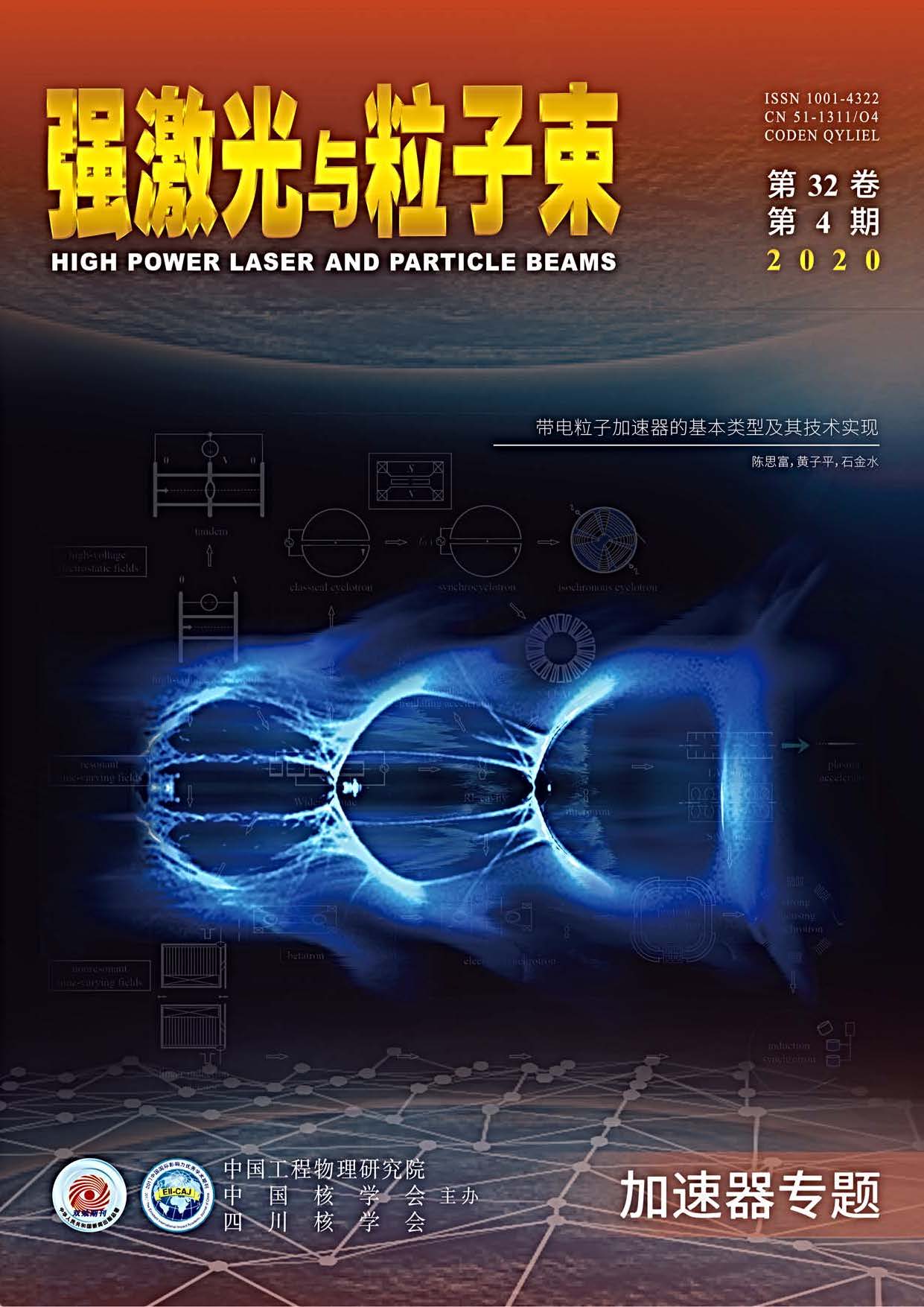2020 Vol. 32, No. 4
The modern particle accelerators have developed greatly over the last 100 years. This article provides an overview of all main types of particle accelerators. Simple charts are given to exhibit conceptual and technological evolutions of major particl...
To study the application and development of stretched wire technology in accelerator alignment and survey, the principle of stretched wire technology is summarized firstly, then the development history of stretched wire alignment method in accelerato...
In measurement of magnetic axis of solenoid, there are some key difficulties to overcome, such as precision measurement of tuat-wire vibration and position, reducing measurement signal distortion, and separative data processing for offset and tilt si...
Flashover across the insulator in induction cavity with electron beam load once occurred frequently, which affected the performance parameters and stability of the high voltage high current devices and equipment. This paper studies the vacuum surface...
In order to greatly improve the quality factor (Q) of a Nb superconducting cavity and reduce its power loss, we performed high-temperature nitrogen doping (N-doping) on the superconducting cavity, which is the most widely used method in the world. Ba...
Vertical test is an important method for characterizing the performance of superconducting cavities. We designed an superconducting cavity vertical test system based on digital self-excited algorithm and the technology of low-level radio frequency, w...
Ten Insert Devices (IDs) had been installed in the Shanghai Synchrotron Radiation Facility (SSRF) storage ring. The ID gaps were repeatedly adjusted for the scientific experiments during the user time. The residual quadrupole errors beyond the ID fee...
A high-speed real-time dynamic power control system based on an open source platform has been developed to satisfy the multi-platform energy extraction requirements of the main loop dynamic power supply in a proton therapy facility. The control syste...
Scanning lidar is widely used in atmospheric remote sensing detection and target capture. To realize the effective detection of lidar, this paper studies four common scanning modes of lidar: raster scanning, Lissajo scanning, spiral scanning and hexa...
Using the theory of free radical concentration fluctuation combined with the effect of optical tweezers, this paper studies the linewidth of femtosecond laser two-photon polymerization multiple-fast-scanning processing theoretically. According to the...
To provide significant parameters for fast ignition coupling efficiency and density diagnosis for higher compression, a ps-duration X-ray backlighter has been produced with ps-duration laser on Shenguang-Ⅱ updated facility. The radiation properties s...
This paper firstly determines the main factors affecting its the efficiency of multi-injection electron beam introduction and preliminary structural parameters through theoretical analysis. Secondly, the Ka-band relativistic multi-beam diode model is...
A novel half rectangular-ring helix slow-wave structure (SWS) is proposed for the design of wide bandwidth and high power traveling-wave tubes. The numerical calculation by 3D electromagnetic simulation software HFSS shows that proper dispersion and ...
Aiming at the research requirements of multi-physical effects mechanism of devices in complex electromagnetic environment, a parallel computing program for semiconductor multi-physics effects, JEMS-CDS-Device, is developed. This paper introduces the ...
In this paper, the rationality of Electromagnetic Compatibility(EMC)design of Printed Circuit Board (PCB) is evaluated in advance through electromagnetic simulation. The purpose of this method is to reduce the chances that the Electromagnetic Interfe...
In this paper, CFBR-II fast neutron reactor (China's second fast neutron pulse reactor) and Co-60 device are used to carry out experiments on different sequential neutrons/gamma irradiated bipolar transistors. Under the condition that the collector-e...
Based on the self-developed nanosecond pulsed test platform with output voltage of 30 ns risetime and 100 ns half width, and the standard dielectric strength DC tester, the breakdown characteristics of four liquid dielectrics (transformer oil, glycer...
Characteristics of electrohydraulic shockwave are the keys to the application of electrohydraulic disintegration of rocks (EHDR). Mathematical models are used to characterize the generation and propagation of the shockwave, an integrated experimental...
To construct a 5 MW neutral beam heating beamline for HL-2M device, the development of the discharge chamber of the hot cathode arc discharge ion source for neutral beam heating was carried out. The neutral beamline contains four sets of 80 kV/45 A/5...
In this work, an efficiency calibration function model is presented to calculate the efficiency of segment in segmented gamma scanning (SGS) for 200 L nuclear waste drum. Discrete SGS efficiencies are simulated with MCNP for different densities and g...




 Email alert
Email alert RSS
RSS

